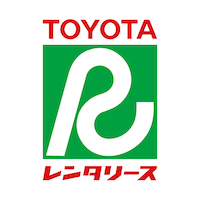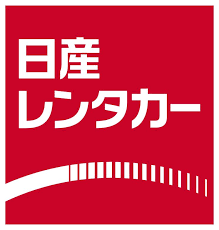The freedom a vehicle gives you is one of the best ways to explore Japan, particularly if you’re heading off the beaten path. Nothing beats the convenience of being able to set your own pace on a journey or the ability to stop at spots that interest you. It allows for a unique glimpse into the land of the rising sun - and one that you may not get with other modes of transport.
The process of renting a car in Japan may seem daunting, but it really couldn’t be simpler. Take a look at what you need to know to get behind the wheel and hit the open road.
What you need to drive
Valid License
First things first – you need to ensure you can legally drive in Japan! You’ll need to be at least 18 years old and have obtained an International Driver's Permit (IDP) in your country of residence before you visit.
A driver’s license from your home country alone isn’t enough, and car rental agencies won’t be able to hand over the keys to your vehicle unless you have an IDP. Bring your license from home and your passport to the rental office in conjunction with the IDP.
If you already reside in Japan and have converted your home country’s license to a Japanese license, you’re good to go!
Understanding of the Road Rules
In Japan, cars drive on the left side of the road. Typically, Japan's road signs and driving rules adhere to international standards but it is recommended to go over the basics before hitting the ignition.
Read up on Japan's traffic rules and other helpful advice provided by JAF (Japan Automobile Federation).
Finding a Rental Car Locations
Most of Japan’s car rental websites will allow you to filter for a rental location by the nearest airport or shinkansen station. For many travelers in Japan, these locations make for logical pick-up and/or drop-off points.
Which companies provide rental cars?
There are a host of car rental companies to choose from in Japan. Here are some of the major names. The companies listed have websites with English-language booking capabilities, so it really is as easy as putting in the required dates, vehicle, and any other add-ons you need.
 | Nippon Rent a Car |
 | Toyota |
 | Orix |
 | Times Car Rental |
 | Nissan |
 | JR Eki Rent-a-Car |
Not every car rental agency will have an in-store representative that speaks your language, so to make the process run as smoothly as possible, ensure that you have your reservation details (i.e. booking/reservation number), International Driving Permit, passport, and home country’s license ready to go.
Things to consider before you hit the road
Makes and models of vehicles
You will be able to select from a range of vehicle types through your rental company. Vehicles will be categorized, for example: compact, standard, sports, SUV, and minivan.
Bear in mind that many of Japan’s roads are significantly narrower and parking lots are substantially more cramped than what you may be used to; smaller vehicles may be advantageous in that sense.
Consider the needs of your passengers, the confidence you have in your driving skills, and the knowledge that road conditions are different before you make your decision.
One-way or return journeys?
Most car rental companies will give you the option of returning the vehicle to the same store location or doing a one-way journey and returning the vehicle at an alternate branch of the car rental chain. There is often a surcharge that comes with returning your vehicle to a different branch than the one you picked the car up from, so if you’re trying to minimize costs keep that in mind.
Traveling with children?
If you are traveling with little ones in tow, many rental-car providers will allow you to specify car seat requirements for your child (or children). In most cases, this is able to be done via the agency’s online booking platforms, so seats are ready to go in the vehicle as soon as you pick it up.
Tolls and ETC readers
Japan’s network of highways and expressways are predominantly toll roads. Payment of tolls can be done in two ways. You can either take a paper-based ticket when you enter a toll road and pay for the tolls by cash or credit card, or use an ETC (Electronic Toll Collection) reader.
Your car rental company of choice will generally offer you an ETC reader with your vehicle rental, and toll payments are settled when you return the vehicle at the end of your trip. Some rental agencies will have a small additional charge for the use of an ETC device, but for others it is included with the vehicle.
There are two perks for using an ETC. First, when passing through a toll gate, you do not need to stop – only slow down until the gate reads the ETC signal and opens the gate automatically. The second is that toll companies offer minor toll discounts for ETC users.
If you decide to forego the ETC reader option, bear in mind that some toll booths do not have credit card capability. Be sure to have some yen on hand to avoid being caught short. In fact, this is advisable by default as some older regional toll roads do not support ETC either.

Whether you decide to use an ETC or not, be aware that toll gates are segregated by payment types. You’ll commonly see three lane options presented to you:
-
一般 (green signage) – this is the “general” lane, for anyone without an ETC reader; payment must be done by cash (though many toll booths now take credit card)
-
ETC/ 一般 (purple and green signage) – this can be used by anyone, whether they have an ETC reader or not; vehicles with ETC can pass without stopping, while others will stop to make payment
-
ETC専用 (purple signage) – this lane is only to be used if you have an ETC reader.
GPS
Multilingual GPS equipment is also provided with most rental vehicles – or can be borrowed for a small additional fee. This can take the stress out of juggling maps and managing directions, particularly in a new country where roads and routes are unfamiliar.
Driving on the left hand side
Japan is a country that drives on the left side of the road, which may be unfamiliar for those of you used to driving on the right. Spend some time familiarizing yourself with the setup of your rented vehicle and get your bearings. Don’t stress too much though - we’ve all used our wipers instead of our signals once or twice!
Procedures for collecting your car
1) Checking-in
Provided you already have a rental car reserved, this step is as simple as arriving at the rental car company counter and showing your reservation number and required documents (license, International Drivers Permit, passport, etc.). If you do not have a reservation, the staff will present you a list of vehicle options and prices.
2) Vehicle Check
Before you hit the road and start exploring Japan by car, the rental agency staff will walk you around your vehicle. Check for any pre-existing dents or scratches to ensure that they are verified by the staff member – you don’t want to be charged later on for damages you didn’t cause.
3) Returning your vehicle
Ensure your vehicle has a full tank of gas when you return it. The staff will check this, along with a check of the vehicle to ensure there is no damage. If you do return the vehicle without a full tank, they will calculate the amount of fuel required based on the number of kilometers you’ve driven, which is often charged at a higher rate than what you would expect to find at a gas station.
Any outstanding fees, such as ETC tolls or payment for any damages incurred, will be settled upon returning the vehicle.
If you are returning a vehicle to a store location near an airport, most agencies will have shuttle bus facilities to get you thin time for your flight.























